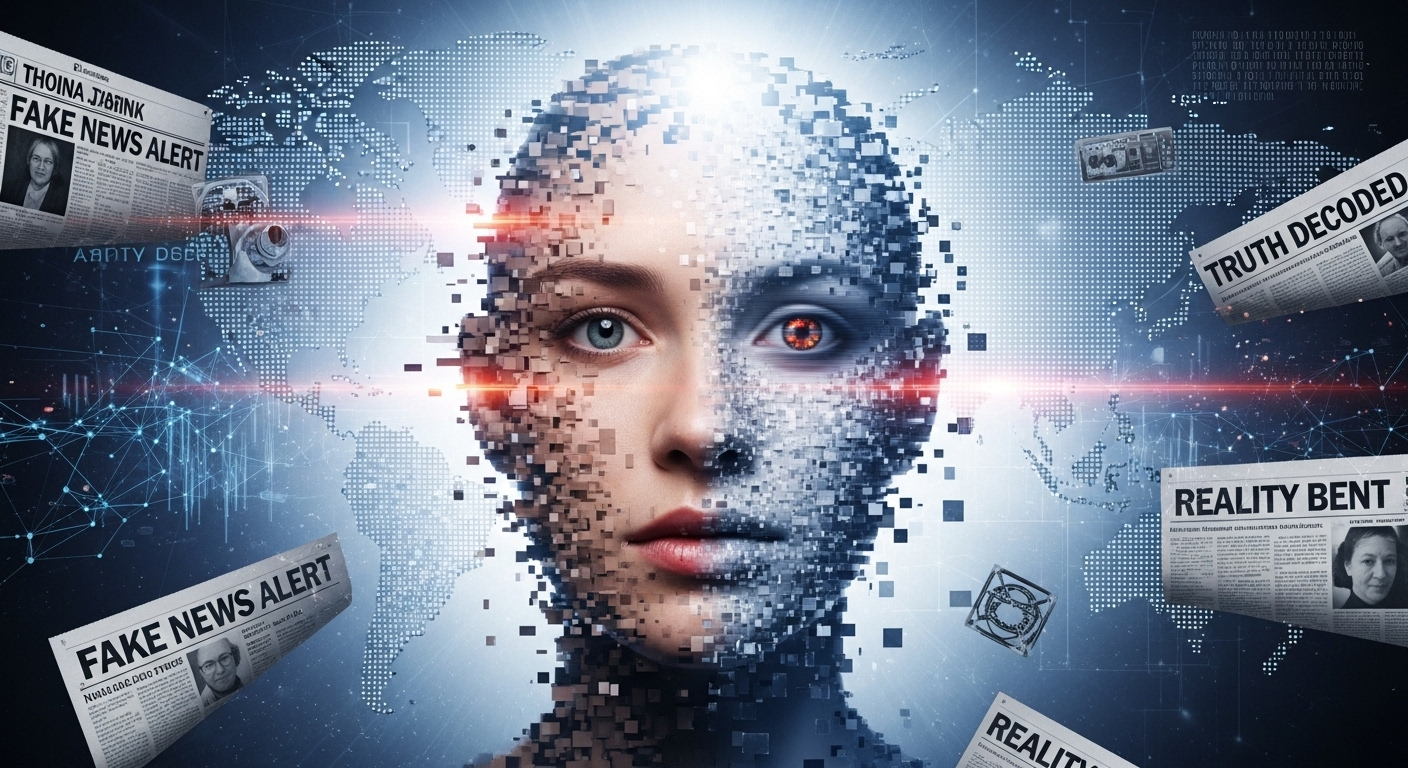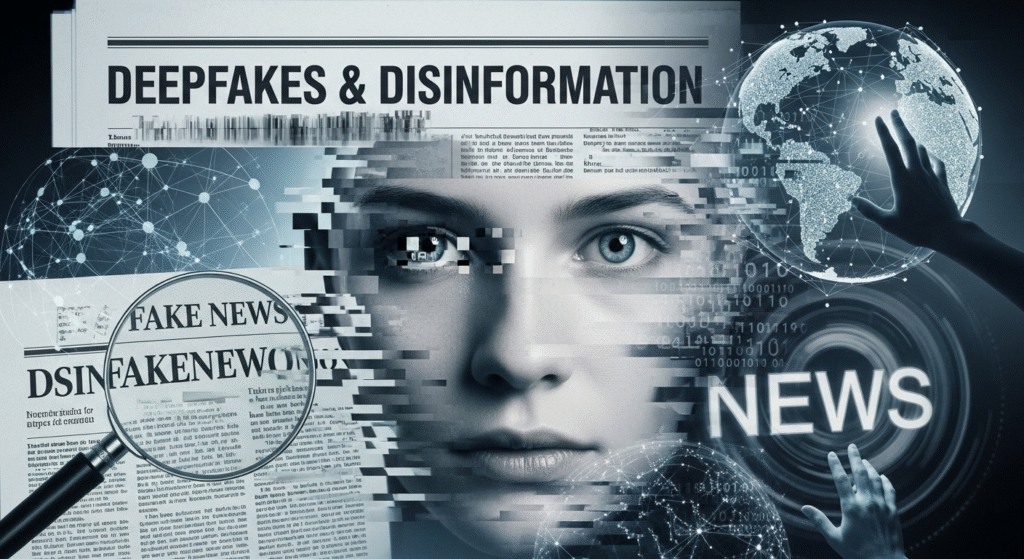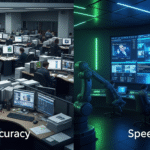Okay, let’s be real. The news these days? It’s… a lot. And it’s not just the sheer volume of it that’s overwhelming. It’s the fact that you can’t always trust what you see and hear. I mean, remember that video of [Politician’s Name] supposedly endorsing [Opposing Politician’s Name]? Wild, right? Turned out it was a deepfake. And that’s just the tip of the iceberg.
Deepfakes, for those not entirely in the know, are essentially AI-generated videos or audio recordings that convincingly mimic a person’s likeness and voice. The technology has gotten scarily good, blurring the lines between reality and fabrication. And while there are some potentially benign uses (think movie special effects, or maybe even educational simulations), the potential for misuse in spreading disinformation is genuinely terrifying.
But here’s the thing. It’s not just about politicians. Deepfakes can ruin reputations, manipulate markets, and generally sow chaos. Think about it: a fake video of a company CEO admitting to wrongdoing could tank their stock price in minutes. Or a fabricated audio clip of a celebrity saying something inflammatory could ignite a social media firestorm. The possibilities are endless – and mostly bad.
The Deepfake Ecosystem: More Than Just Fake Videos

Actually, that’s not quite right. Deepfakes aren’t just fake videos. They’re part of a whole ecosystem of disinformation. Consider the coordinated social media campaigns, the bot networks amplifying false narratives, and the sheer volume of misleading content designed to overwhelm our ability to discern fact from fiction. Deepfakes are often just the most visually striking and shareable part of that larger picture. And that is precisely what makes this sort of content so alluring.
Think of it like this: the deepfake is the shiny object that grabs your attention, but the real damage is done by the carefully crafted narrative surrounding it. It’s like a magician’s trick – you’re so focused on the seemingly impossible feat that you miss the subtle sleight of hand that makes it all work.
Why Are Deepfakes So Effective?
Several reasons, really. First, there’s the inherent human tendency to believe what we see with our own eyes. Seeing (or hearing) is believing, right? Except when it’s not. And that’s where deepfakes exploit our natural trust in visual and auditory information. Second, there’s the “illusory truth effect” – the more often we’re exposed to something, the more likely we are to believe it, regardless of whether it’s actually true. Even if we know a video is likely a deepfake, repeated exposure can still subtly influence our perceptions and beliefs.
But here’s something even more interesting: deepfakes often play on our existing biases and prejudices. They’re designed to confirm what we already believe (or want to believe), making us less likely to question their authenticity. I remember reading about a study by Dr. Emily Carter at Stanford about cognitive biases influencing our interpretation of information. The article was incredible! I am still trying to find it.
Navigating the New Reality: Critical Thinking and Media Literacy
So, what can we do? How do we navigate this increasingly complex and treacherous information landscape? Well, there’s no easy answer, but here’s the thing: critical thinking and media literacy are more important than ever. We need to become more discerning consumers of information, actively questioning what we see and hear, and seeking out credible sources. That is what I told to my younger sister the other day. She was in shock by some news about her favorite celebrity. I think she believed it even when I told her the source was not reliable.
And it’s not just about avoiding deepfakes themselves. It’s about recognizing the broader patterns of disinformation and manipulation. Are we seeing coordinated efforts to spread a particular narrative? Are certain sources consistently biased or unreliable? Are we being emotionally manipulated through fear, anger, or outrage? These are the kinds of questions we need to be asking ourselves.
Speaking of reliable sources, it’s also crucial to support quality journalism. Investigative journalism, fact-checking organizations, and responsible news outlets play a vital role in holding power accountable and uncovering the truth. Support the sources, that you trust, as much as you can.
The Role of Technology in Deepfake Detection
I’ve got to admit, this part fascinates me. There’s a whole field of research dedicated to developing technology that can detect deepfakes. Algorithms that analyze facial movements, voice patterns, and even subtle inconsistencies in lighting and shadows are being developed to identify manipulated media. A cool tool that you could use is Reality Defender. This could protect you for scams or fraud attempts.
But here’s the catch: the technology used to create deepfakes is constantly evolving, and the detection technology has to keep pace. It’s an arms race, in a way. As detection methods become more sophisticated, so do the techniques used to create deepfakes. Adapting to these changing conditions is paramount.
And, honestly, relying solely on technology to solve the problem is a mistake. Ultimately, it comes down to us – individual humans – developing the critical thinking skills and media literacy habits needed to discern fact from fiction. We can’t outsource our responsibility to think for ourselves.
The Future of Trust in a Deepfake World
Where does this all lead? What does the future hold for trust in a world where deepfakes are becoming increasingly sophisticated and widespread? The answer, I suspect, is that trust will become more personalized and contextual. We’ll rely less on broad generalizations about institutions or sources, and more on our own judgment and experience.
I initially thought that technology would be the definite solution for this matter, but after looking deeper I realized that it is not that easy. The only way to stop it is to have critical thinking and good media literacy skills.
We’ll need to cultivate a healthy skepticism, a willingness to question everything, and a commitment to seeking out diverse perspectives. We’ll need to become our own fact-checkers, our own investigative journalists, our own guardians of truth. Easier said than done, I know. But it’s essential if we want to navigate the new reality of news and maintain a grip on reality itself.
And on the other hand, if you are a gamer, then you can get yourself entertained by games from this website: CrazyGames
FAQ: Deepfakes and Disinformation
How do I know if a video I’m watching is a deepfake?
That’s the million-dollar question, isn’t it? Unfortunately, there’s no foolproof method. However, there are some things you can look for. Check for inconsistencies in facial movements, unnatural blinking patterns, or discrepancies in lighting and shadows. Also, pay attention to the audio – does the voice sound robotic or unnatural? Are the lip movements synchronized with the speech? If something feels off, it’s worth investigating further.
Why are deepfakes so hard to detect?
The frustrating thing about this topic is that the technology used to create deepfakes is advancing rapidly, making them increasingly difficult to distinguish from real videos. Creators are getting better at smoothing out imperfections and making the manipulations more seamless. Plus, our brains are wired to trust what we see, which makes us susceptible to being fooled, even when there are subtle clues that something is amiss.
Isn’t the term “deepfake” just alarmist hype?
I can see why some might think that. But while not every manipulated video qualifies as a dangerous deepfake, the potential for harm is very real. It’s not just about the technology itself, but about the broader context of disinformation and manipulation. Deepfakes can be incredibly effective at spreading false narratives and undermining trust in institutions. They can be weaponized.
How can I improve my media literacy skills?
Start by actively questioning everything you see and hear. Don’t just blindly accept information at face value. Seek out diverse perspectives, read news from multiple sources, and be wary of emotionally charged content. Look for evidence-based reporting, fact-checking, and responsible journalism. There are also numerous online resources and courses available to help you improve your media literacy skills, such as ones from reputable universities. The more you educate yourself, the better equipped you’ll be to navigate the complex world of news and information.



